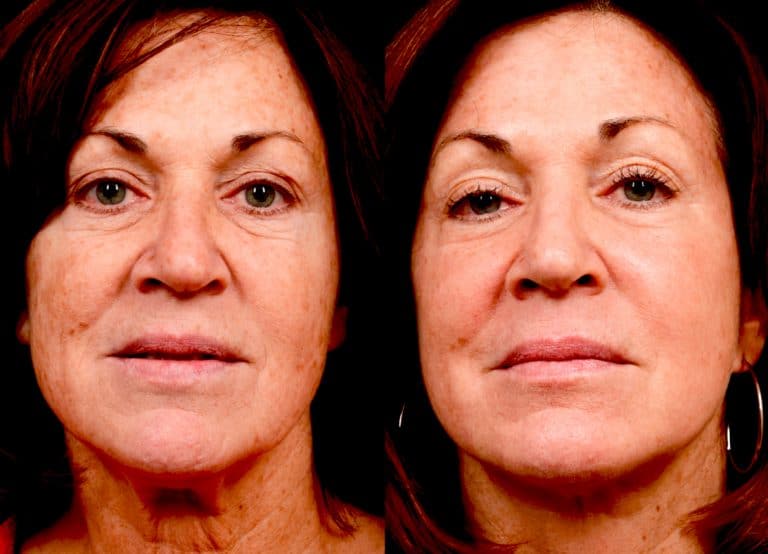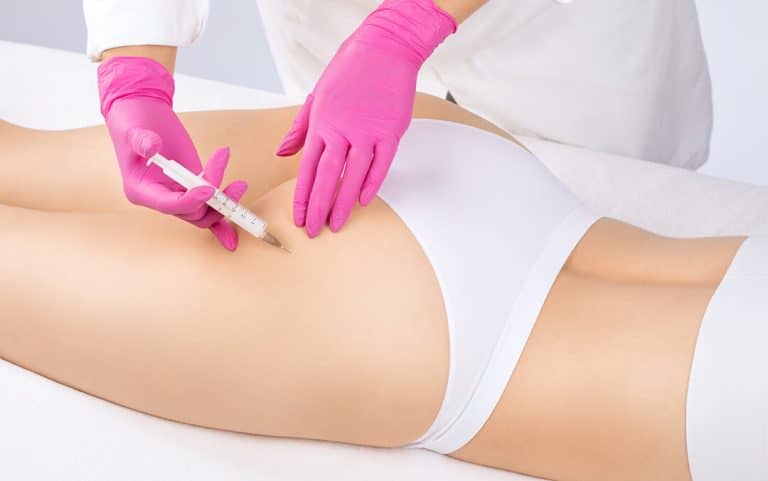Laser Fractional Resurfacing Treatments Cost: Steps & Financing
Key Takeaways
- Understand Cost Factors: Laser fractional resurfacing costs for skin care lasers vary based on the type of laser, the number of sessions needed, and the geographical location.
- Choose the Right Laser: Different lasers address specific age-related skin concerns. Consult with a dermatologist to find the best laser treatment options for your needs.
- Consider Financing Options: Many clinics offer financing plans to make laser skin resurfacing treatments more affordable. Investigate these options before committing.
- Prepare for Recovery: Recovery time can vary. Be ready for potential downtime after laser skin resurfacing and follow post-treatment care instructions to ensure optimal results.
- Evaluate Skin Concerns: This treatment effectively addresses wrinkles, scars, and pigmentation issues. Assess if your skin concerns align with what laser resurfacing treats.
- Consult Professionals: Always seek advice from certified professionals to get personalized recommendations and ensure safe and effective treatment, especially for laser skin resurfacing.
Understanding Laser Resurfacing
Definition
Laser fractional resurfacing is a skin rejuvenation technique. It uses lasers to target damaged skin layers. The purpose is to improve skin texture and appearance. This treatment can reduce wrinkles, scars, and sun damage.
Non-Invasive Benefits
Laser resurfacing treatments are non-invasive. They do not require cuts or stitches. Patients experience less pain compared to traditional methods. Recovery time is also shorter.
Versatility
Laser skin resurfacing treats various skin concerns. These include:
- Acne scars
- Age spots
- Wrinkles
- Sun damage
This versatility makes laser treatment a popular choice for many patients.
Types of Laser Resurfacing
There are different types of laser resurfacing procedures:
- CO2 Laser Resurfacing: Effective for deeper scars and wrinkles.
- Erbium Laser Resurfacing: Best for fine lines and superficial skin issues.
- Fractional Laser Skin Resurfacing: Targets small areas without affecting the whole skin surface.
Each type has its own benefits and recovery times.
Procedure Details
The laser resurfacing procedure involves directing laser beams at the skin. This removes the outer damaged layer. New, healthy skin grows in its place. The process may take 30 minutes to 2 hours depending on the area treated.
Recovery Process
Recovery from laser treatment varies by person and treatment type. Generally, patients experience redness and swelling initially. Full recovery can take from a few days to several weeks. Proper aftercare is crucial for best results.
Dramatic Improvements
Patients often see dramatic improvements after fraxel laser treatments. Skin looks smoother and younger. Results can last for years with proper skincare.
Procedure Steps
Initial Consultation
A consultation is the first step. The doctor examines the skin and discusses concerns. They create a tailored treatment plan. This plan considers skin type, issues, and goals.
The initial meeting helps set expectations. It also builds trust between the patient and doctor.
Preparation
Before the procedure, preparation is key. The skin must be clean and free of makeup. Patients may receive numbing cream to reduce discomfort.
etimes, doctors prescribe antiviral medication. This helps prevent infections during healing.
The Procedure
During the session, a laser targets specific skin layers. It removes damaged cells layer by layer. The doctor adjusts the laser settings based on the treatment plan.
Each session can last from 30 minutes to 2 hours. The duration depends on the area treated and the number of layers targeted.
Post-Treatment Care
After the procedure, proper care is crucial. The skin may feel like a sunburn. Redness and swelling are common but temporary.
Doctors provide detailed care instructions. These often include:
- Applying prescribed ointments
- Avoiding direct sunlight
- Keeping the skin moisturized
Following these steps aids in faster recovery and better results.
Healing Process
Healing varies by person. It can take a few days to several weeks. During this time, new skin forms, replacing old, damaged layers.
Patients might need multiple sessions for optimal results. Each session allows deeper penetration into different skin layers.
Professional Expertise
Professional expertise ensures safety and effectiveness. Trained doctors understand how to adjust laser settings properly. They know how to minimize risks and manage complications.
Cost Factors
Severity of Condition
The severity of the skin condition directly affects the total cost. More severe conditions require more intensive treatment. For example, deep wrinkles or extensive acne scars need multiple sessions. Each session adds to the overall expense. Light skin issues might need fewer treatments, lowering the cost.
Laser Technology
The type of laser technology used impacts the price. Advanced lasers often cost more. These lasers offer better precision and results. Fractional CO2 lasers are an example of advanced technology. They can be more expensive than older models because they deliver superior outcomes and faster recovery times.
Geographic Location
Geographic location also influences pricing. Treatments in urban areas usually cost more. Cities like New York or Los Angeles have higher operating costs. These costs get passed on to patients. In contrast, smaller towns might offer lower prices due to reduced overheads.
Dermatologist’s Experience
The dermatologist’s experience level is another factor. Highly experienced dermatologists often charge more for their services. They bring expertise and a track record of successful treatments. Patients may pay a premium to ensure quality care and better results.
Laser Types
CO2 Lasers
CO2 lasers are powerful and precise. They remove the outer layers of skin. This process helps in treating deep wrinkles, scars, and warts. The actual laser energy vaporizes the damaged skin, promoting new skin growth.
These lasers are highly effective but have longer recovery times. Patients might need weeks to heal fully. The cost can be higher due to the intensity and effectiveness of the treatment.
Erbium Lasers
Erbium lasers are another option for fractional resurfacing. They target both superficial and moderately deep wrinkles. These lasers remove less tissue compared to CO2 lasers.
Recovery time is shorter with erbium lasers, often just a few days. The cost is generally lower than CO2 treatments. This makes them a preferred choice for those seeking quicker recovery.
Ablative vs. Non-Ablative Lasers
Ablative lasers remove the outer layers of skin. This category includes CO2 and erbium lasers. They offer dramatic results but require significant downtime for healing.
Non-ablative lasers work differently. They heat the underlying skin tissue without removing it. This stimulates collagen production and improves skin texture over time.
Non-ablative treatments have minimal downtime. Patients can usually return to normal activities quickly. However, multiple sessions may be needed for optimal results.
Fractional Lasers
Fractional lasers are a blend of ablative and non-ablative technologies. They treat only a fraction of the skin at a time, leaving surrounding areas untouched.
This approach speeds up recovery while still providing noticeable improvements. Fractional laser treatments can address fine lines, sun damage, and uneven skin tone effectively.
IPL Laser Treatments
IPL (Intense Pulsed Light) treatments use broad-spectrum light rather than a single wavelength laser. They are not true laser treatments but are often grouped with them due to similar applications.
IPL treatments target pigmentation issues like age spots and rosacea. Recovery time is short, making it a popular choice for busy individuals.
Cost Implications
The choice of laser affects the overall cost of the treatment significantly:
- CO2 laser treatments tend to be more expensive due to their intensive nature.
- Erbium laser treatments are moderately priced with quicker recovery times.
- Non-ablative treatments might require multiple sessions, adding up in cost.
- Fractional lasers offer a balance between cost, recovery time, and effectiveness.
- IPL treatments are usually less costly but may require frequent maintenance sessions.
Skin Concerns Addressed
Wrinkles
Laser fractional resurfacing effectively treats wrinkles. It targets the deep layers of the skin. The heat from the laser stimulates collagen production. This results in smoother and firmer skin. Both fine lines and deeper wrinkles can be reduced.
Scars
Acne scars and other types of scars can also be treated with laser resurfacing. The laser removes damaged skin cells. New, healthier skin replaces them. This process can significantly reduce the appearance of scars. Different lasers may be used depending on the scar type.
Sun Damage
Sun damage is another common issue addressed by laser treatments. Prolonged sun exposure causes dark spots and uneven skin tone. Laser resurfacing can target these areas specifically. The treatment helps to even out skin tone and reduce pigmentation issues.
Skin Texture
Improving skin texture is a major benefit of laser resurfacing. Uneven texture can result from various factors like acne or aging. Lasers remove the outer layer of damaged skin. They also stimulate collagen beneath the surface. This results in a smoother, more even texture.
Skin Tone
Laser treatments are effective for improving skin tone as well. Uneven skin tone can be caused by sun damage, aging, or hormonal changes. Lasers target these issues directly, breaking down excess pigment. Healthier, more uniform skin emerges over time.

Various Skin Types
Laser resurfacing is suitable for different skin types. However, certain lasers are better for specific concerns:
- CO2 lasers are often used for deeper wrinkles.
- Erbium lasers are more suitable for lighter wrinkles and fine lines.
- Fractional lasers work well for acne scars and sun damage.
Dermatologists tailor the treatment to each individual’s needs.
Continued Skin Care
After laser resurfacing, continued skin care is crucial. Proper aftercare ensures long-lasting results and minimizes side effects:
- Use gentle cleansers.
- Apply moisturizers regularly.
- Avoid direct sun exposure.
- Wear sunscreen daily.
Follow-up visits with a dermatologist are also recommended.
Financing Options
Payment Plans
Many clinics offer payment plans to help manage the cost of laser fractional resurfacing treatments. These plans can spread the total cost over several months. This makes it easier for patients to afford the treatment. Some clinics partner with third-party financing companies. These companies provide loans or credit lines specifically for medical procedures.
Patients should ask about interest rates and terms before signing up. It is also important to read the fine print. Some plans may have hidden fees or penalties for late payments.
Insurance Coverage
Insurance might cover laser fractional resurfacing if it is deemed medically necessary. For example, removing scars from burns or surgery could qualify. Patients must check with their insurance providers first. They need to understand what is covered and what is not.
A letter from a doctor might be required to prove medical necessity. This letter should explain why the procedure is needed for health reasons. Without this, insurance companies are less likely to approve coverage.
Consult Financial Advisors
Consulting with a financial advisor can be very helpful. They can provide insights into the best ways to finance the treatment. Advisors can suggest options that patients might not have considered.
The clinic’s billing department is another valuable resource. They are familiar with various financing options and can guide patients through the process. They can also explain any available discounts or special offers.
Time Considerations
Planning ahead is crucial when considering financing options. Patients should start exploring these options well before scheduling their treatment. This allows enough time to secure financing and make informed decisions.
Recovery Insights
Typical Timeline
Recovery from laser fractional resurfacing varies. Most patients experience initial redness and swelling. These symptoms usually peak within the first 48 hours. By the third or fourth day, the skin begins to peel and flake. This process can last up to a week.
After one week, new skin starts to form. The treated area may still appear pink or sensitive. Full recovery often takes two to three weeks. Patients should avoid sun exposure during this time.
Aftercare Instructions
Following aftercare instructions is crucial for optimal healing. Patients must keep the treated area clean and moisturized. Use gentle cleansers and avoid harsh products.
Doctors often recommend applying a prescribed ointment. This helps in reducing infection risks and speeds up healing. Avoid picking at peeling skin to prevent scarring.
Staying hydrated and maintaining a healthy diet also aids recovery. Drinking plenty of water supports skin regeneration.
Downtime Expectations
Downtime varies depending on the treatment’s intensity. Mild treatments might require only a few days of rest. More intensive sessions could necessitate up to two weeks off work or school.
Patients should plan their schedules accordingly. It’s best to avoid important events during the initial recovery phase.
Signs of Complications
While rare, complications can occur. It’s important to recognize signs that need immediate medical attention:
- Excessive swelling or redness
- Severe pain not relieved by medication
- Pus or unusual discharge from the treated area
- Fever or chills
These symptoms may indicate an infection or other serious issue. Promptly contact a healthcare provider if any of these signs appear.
Emotional Aspects
Recovery can be emotionally challenging. Seeing one’s face swollen or red can be distressing. Support from friends and family is beneficial during this period.
Conclusion
Final Remarks
Laser fractional resurfacing can be a game-changer for your skin. By understanding the costs, procedure steps, and recovery insights, you’re well-prepared to make an informed decision. Different laser types cater to various skin concerns, ensuring you get the best results possible.
Ready to take the next step? Consult with a certified dermatologist to explore your options and start your journey to rejuvenated skin. Don’t wait—your fresh, glowing complexion is just around the corner.
Frequently Asked Questions
What is the average cost of laser fractional resurfacing treatments?
The cost varies but typically ranges from $1,000 to $2,500 per session. Factors like location, practitioner expertise, and skin condition affect the price.
How many sessions are needed for optimal results?
Most patients need 3-5 sessions. The exact number depends on your skin condition and desired outcome.
Are laser fractional resurfacing treatments painful?
e discomfort is expected. Most providers use numbing creams to minimize pain. Post-treatment, you might feel a sunburn-like sensation.
What skin concerns can laser fractional resurfacing address?
It treats acne scars, wrinkles, fine lines, sun damage, and uneven skin tone. It improves overall skin texture and appearance.
How long is the recovery period after a treatment?
Recovery usually takes 7-10 days. Redness and swelling are common initially but subside within a week.
Are there financing options available for these treatments?
Yes, many clinics offer financing plans or accept medical credit cards. Consult your provider for specific options.
What types of lasers are used in fractional resurfacing treatments?
Common types include CO2 and Erbium lasers. Each has unique benefits and suitability depending on your skin type and concerns.






